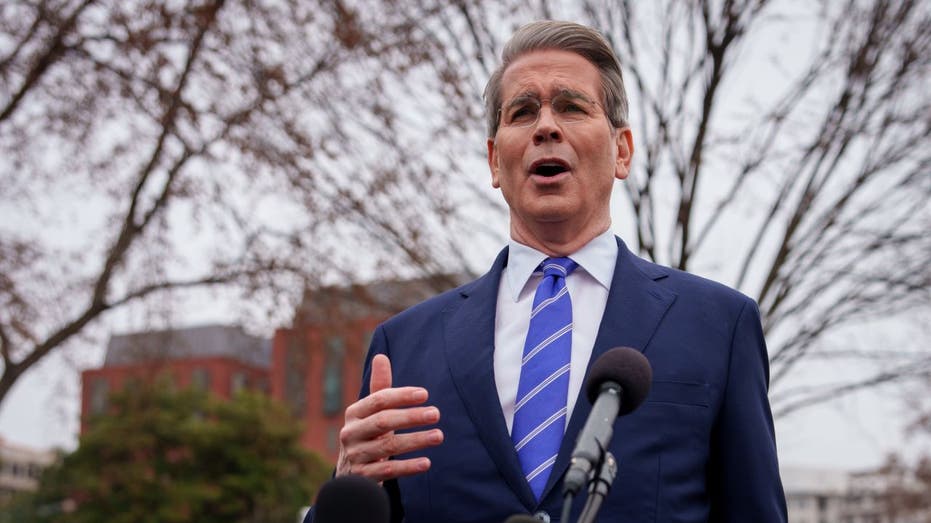President Donald Trump rolled out additional tariffs on China this week despite bipartisan warnings that the move could hurt American consumers and businesses.
The Trump administration announced Wednesday it would alleviate reciprocal tariffs on other countries for 90 days, while also revealing that his administration would immediately hike tariffs on Chinese goods to 145%. In response, China raised its tariffs on U.S. goods to 125%.
It won’t take long for consumers and businesses to feel the sting of the Chinese tariffs, according to Michael Strain, director of economic policy studies at the American Enterprise Institute.
HERE’S A CLOSER LOOK AT TRUMP’S TARIFF PLAN: WHAT TO KNOW ABOUT THE NEW DUTIES
Strain said he anticipates inflation data for April will reflect the new duties.
“Businesses are already feeling the tariffs,” Strain said in an email to Fox News Digital. “The uncertainty about tariff rates has made it very difficult for businesses to plan because they do not know what their costs of production will be in the future. This has led to a slowdown in investment spending and in plans for expansion and hiring.”
While the burden of tariffs is on pause for the next three months, Strain said businesses would resort to stockpiling resources.
In particular, Strain said retailers will face the greatest burden from the Chinese tariffs imposed on Chinese goods, and farmers will bear the brunt of the retaliatory tariffs China is imposing in response.
Likewise, he said tariffs would reduce manufacturing employment in the U.S., claiming higher input costs and retaliatory tariffs would outweigh any efforts to beef up employment due to import protections.
While U.S. manufacturing output accounted for more than 28% of global output in 2001, that number declined to over 17% in 2023, according to a White House fact sheet. Altogether, the White House said, the U.S. has lost a total of 5 million manufacturing jobs between 1997 and 2024.
HOW WE GOT TO LIBERATION DAY: A LOOK AT TRUMP’S PAST COMMENTS ON TARIFFS
Strain isn’t the only observer who believes tariffs won’t save American manufacturing jobs.
“I would not expect the tariffs to bolster U.S. manufacturing jobs,” Alan Sykes, an international economics and law professor at Stanford Law School, said in an email to Fox News Digital. “I would not expect companies to do significant hiring until there is clarity on the level and duration of the tariffs, which seems months away, and even then only if the expectation is for significantly higher tariffs over an extended period of time.”

Sykes said bolstering manufacturing jobs typically demands a large capital investment, but that often takes years and is recouped over decades. He said he doubts tariffs will carry over into future administrations.
“I would be surprised if high tariffs would be expected to persist much past the end of the Trump administration,” Sykes said.
Likewise, Sykes warned the tariffs could trigger job losses at U.S. companies that depend on heavily taxed imports or rely on exports vulnerable to retaliation if the tariffs stay in place.
Trump and his administration have bashed other countries’ trade practices and accused them of engaging in unfair trade practices against the U.S., arguing tariffs would bring back manufacturing jobs to the U.S. Trump and his administration called for tariffs to address the nation’s 2024 record $1.2 trillion trade deficit.
Trump announced historic tariffs in a ceremony at the White House’s Rose Garden for a “Make America Wealthy Again” event April 2, claiming these new duties would generate new jobs for U.S. workers.
The tariff plan established a baseline tax of 10% on all imports to the U.S., along with customized tariffs for countries that place higher tariffs on U.S. goods. The baseline tariffs of 10% took effect Saturday, while the others took effect Wednesday at midnight.
However, Trump reversed course Wednesday, saying reciprocal tariffs announced last week would remain paused for 90 days, during which time the countries would only face the baseline 10% tariff.
Read the full article here


